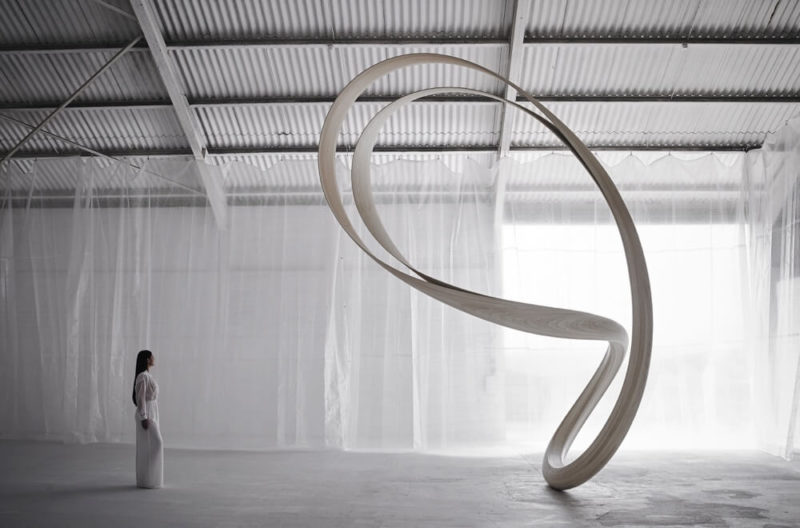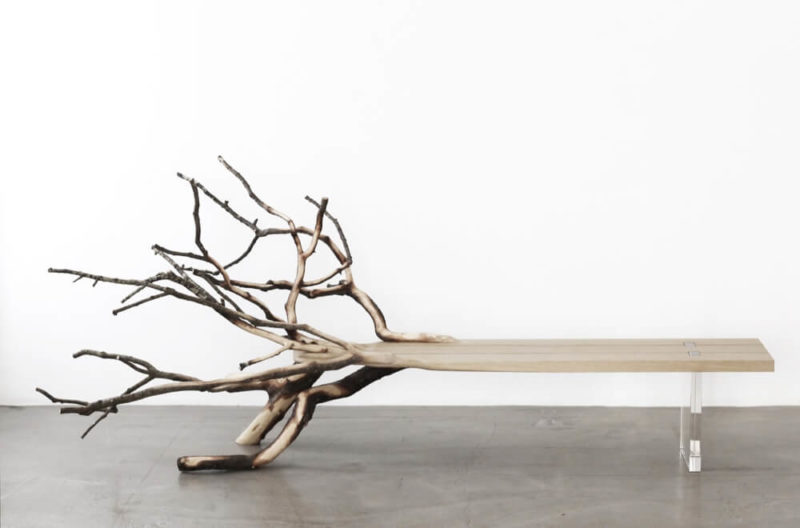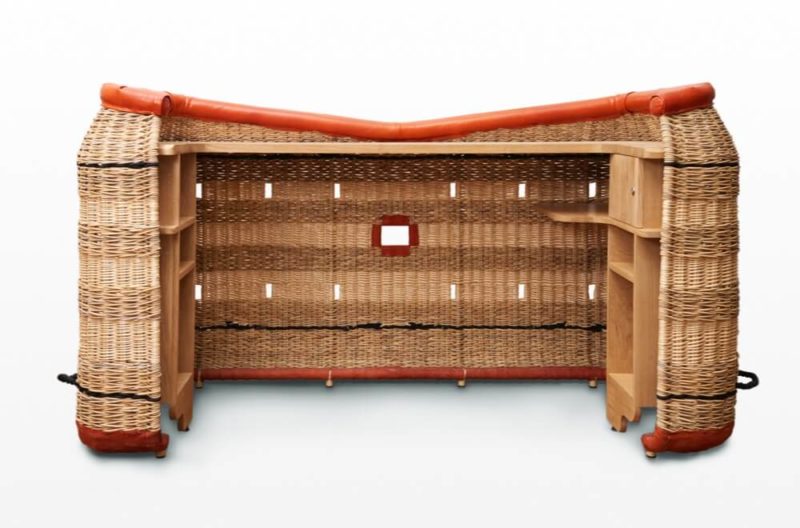Supernature
Pablo Reinoso’s exuberant sculptures push the boundaries of form and function.
Polygone Riviera, Cagnes-sur-Mer
19th June – 14th October 2019
THIS SUMMER, THE Argentine, Paris-based artist Pablo Reinoso is exhibiting ten outdoor, monochromatic sculptures in the shopping complex Polygone Riviera in Cagnes-sur-Mer, south of France. This is the fourth such exhibition since Polygone Riviera was inaugurated in 2016, when €3m was spent on contemporary art commissions. The renowned French curator Jérôme Sans picked ten international artists, including Reinoso, Tim Noble and Sue Webster, Jean-Michel Othoniel, Daniel Buren and Antony Gormley, to make permanent pieces. Reinoso’s ‘Banc d’amarrage’ (2015), a black, painted steel bench from which curling beams twist over the ground and rise over the wall, is one of those works.
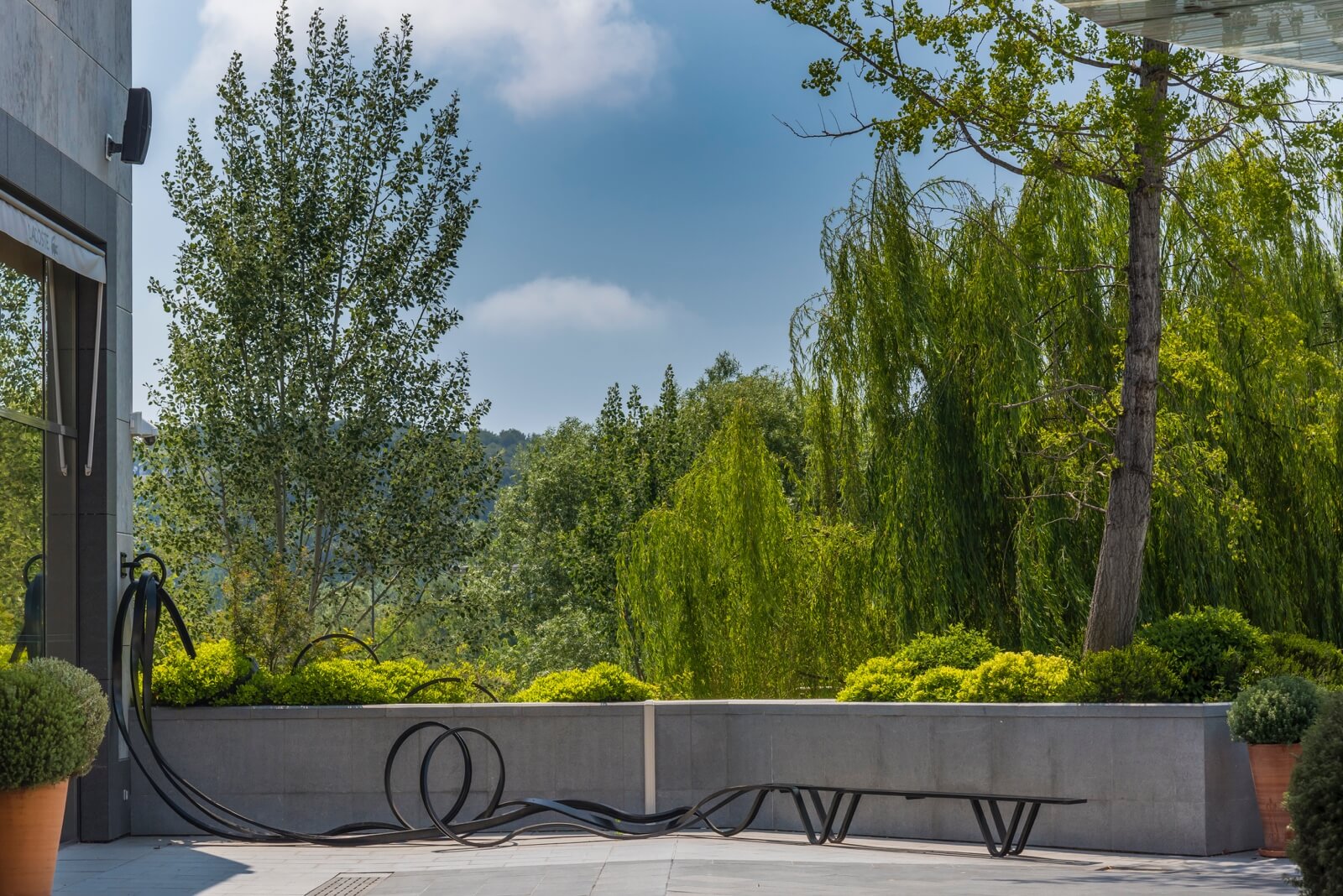
Pablo Reinoso, ‘Banc d’amarrage’, 2015
COURTESY: Polygone Riviera
For this exhibition, ‘Supernature’, Reinoso is presenting nine more pieces: another permanent installation, as well as eight sculptures which are being shown temporarily. The works, all in black or white, are ‘vegetalised’ sculptural forms – mostly benches with an exuberant profusion of circles of beams extending upwards and outwards. Installed on a lawn in front of a view of lush hills – the kind of vista that may have inspired Cézanne – is the new permanent piece, ‘Green Line’ (2019). It’s a longitudinal sculpture of benches interlinked by rising arabesque beams.
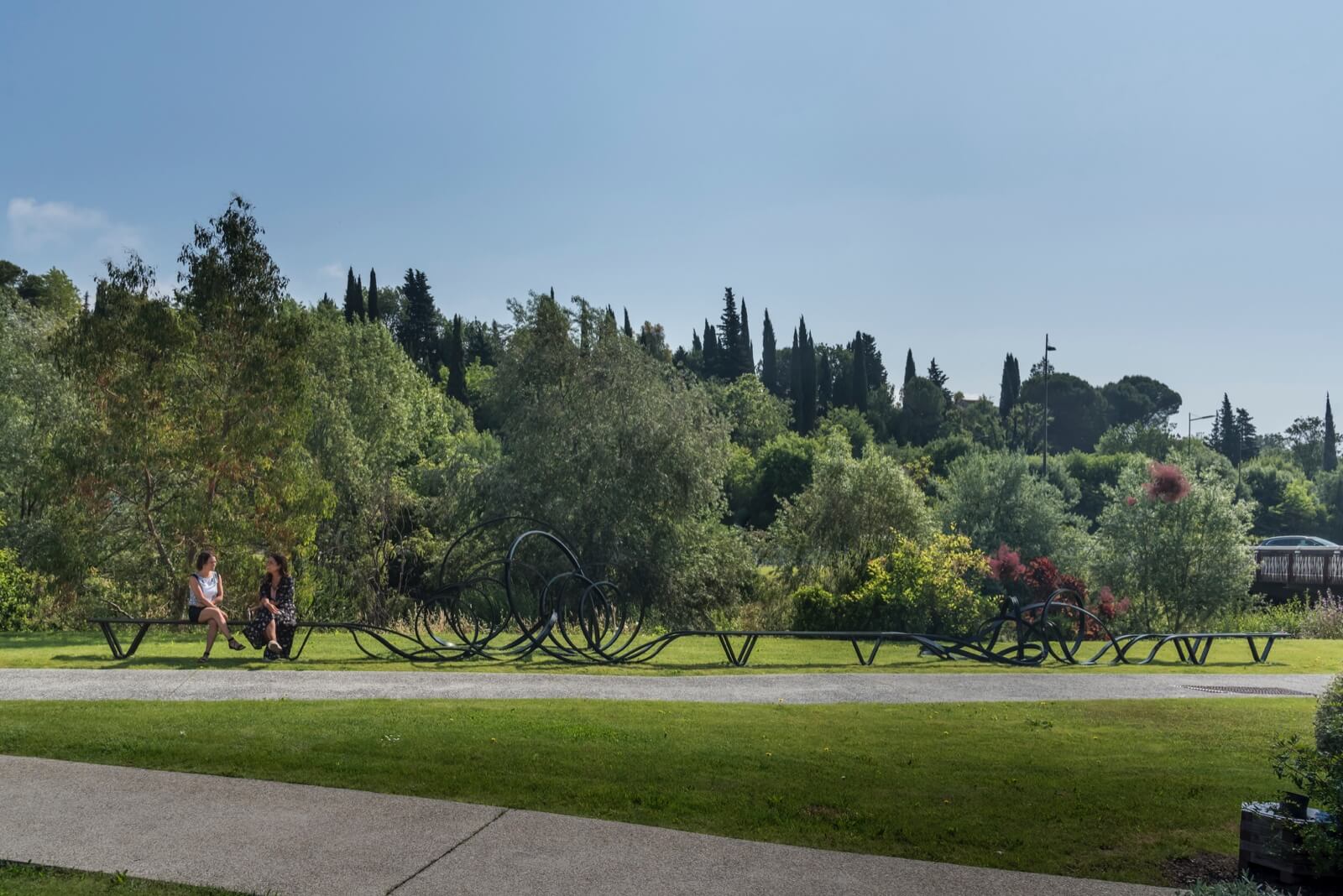
Pablo Reinoso, ‘Green Line’, 2019
COURTESY: Polygone Riviera
BORN IN BUENOS Aires in 1955, Reinoso started making sculptures with wood at the age of seven and made his first piece of art, ‘Articulated Trunk’, in 1970. He moved to Paris at the age of 23 after being captivated by Rodin’s and Henri Laurens’s sculptures during a trip to France. Although he began exhibiting public art internationally in the 1990s, it is during the last decade that his work has become more renowned. “My work has a relationship with function which places me at the border between art, design and architecture,” declares Reinoso. “Some pieces can be used, whereas others can’t – but they’re always sculptures.”

Pablo Reinoso, ‘Complex Talk’, 2017
COURTESY: Polygone Riviera
The new pieces are variations of Reinoso’s ‘Spaghetti Bench’ (2006), which was first shown at Carpenters Workshop Gallery in London. That original piece was carved from one piece of wood and had slats swirling onto the ground and climbing onto the wall, like ivy. “There were so many strips of wood on my studio’s floor that it looked as if a plate of spaghetti had fallen there,” recalls Reinoso, now represented by Galerie Xippas (Paris/Geneva/Montevideo). “I was inspired by vegetal growth, and so I developed the bench in that way.”
Prior to that, Reinoso had made a series of playful, sculptural works developed from the ‘Thonet Chair No. 14’, which he regards as an icon of design. The idea of ‘liberating’ a form is also seen in his series of wooden picture frames, ‘Marco Firulete’, where the formal mouldings break out rebelliously in swirls of wood at the bottom and sides. Such pieces give the impression of a form or material being pushed beyond its normal parameters.
The first ‘Spaghetti Bench’ grew out of a desire to make something non-referential. “After the sculptures based on the Thonet chair, I wanted to start making something anonymous that would be common to everyone, and that’s when I thought of a public bench and the prolongation of the slats,” Reinoso explains.

Pablo Reinoso, ‘Love Beam’, 2016
COURTESY: Polygone Riviera
Reinoso evolved the benches into painted aluminium so they could become outdoor, public pieces. The properties of the metal enabled him to create three dimensional pieces with more freedom. “My dream was to make monumental sculptures and I’ve always admired artists like Alexander Calder or Richard Serra,” he says. Referring to how he stretches the capacity of a material, he continues: “I say to the raw material: ‘We’ll do everything with you except what you were created for and we’ll break the rules.’ Aluminium beams are used to being rigid and not being altered into this state. I always work on ambiguity so that the piece invites contemplation.”
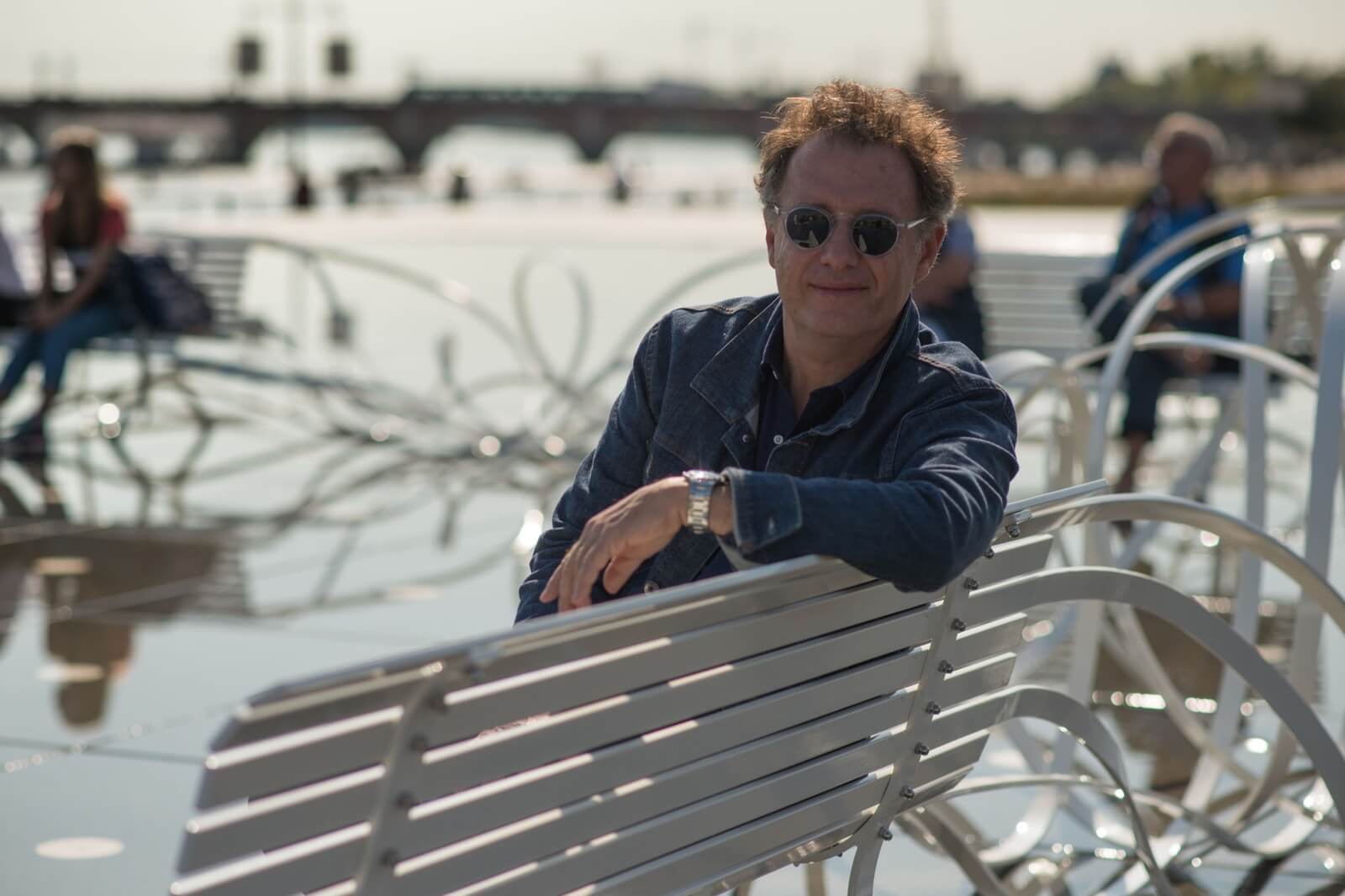
Pablo Reinoso
COURTESY: © Rodrigo Reinoso
SOME OF REINOSO’S new works at Polygone Riviera are installed in public spaces next to retail stores. “When I go somewhere, I try to be in equilibrium with the place. In order to get the composition right, I pay close attention to the kind of rapport that might be established between people, as well as how they would look at the landscape.” On the day we visit in June, shoppers sit down to chat, relax and make phone calls. However, ‘Double Talk’ (2017), a white bench with beams exuberantly springing from either end, is installed in a fountain and is off-limits to visitors.

Pablo Reinoso, ‘Double Talk’, 2017
COURTESY: Polygone Riviera
As well as the ‘functional sculptures’, there are two non-functional works: ‘La Chose’ (2017), a vertical, spider-like sculpture whose black steel legs are inserted in its base “like a weeping willow”, and ‘Rolling Sculpture Monaco’ (2018), a circle of black steel unfurling into a swirl of ribbons. “As soon as you make a sculpture, you’re in Louise Bourgeois’s territory,” Reinoso says about ‘La Chose’. Explaining how he reached this vertical expression, he adds: “It’s always about playing a game and making the material do several exercises: ‘Can you jump? Or balance on your head?’ Each time I try to reach the limit of what the piece can express.”
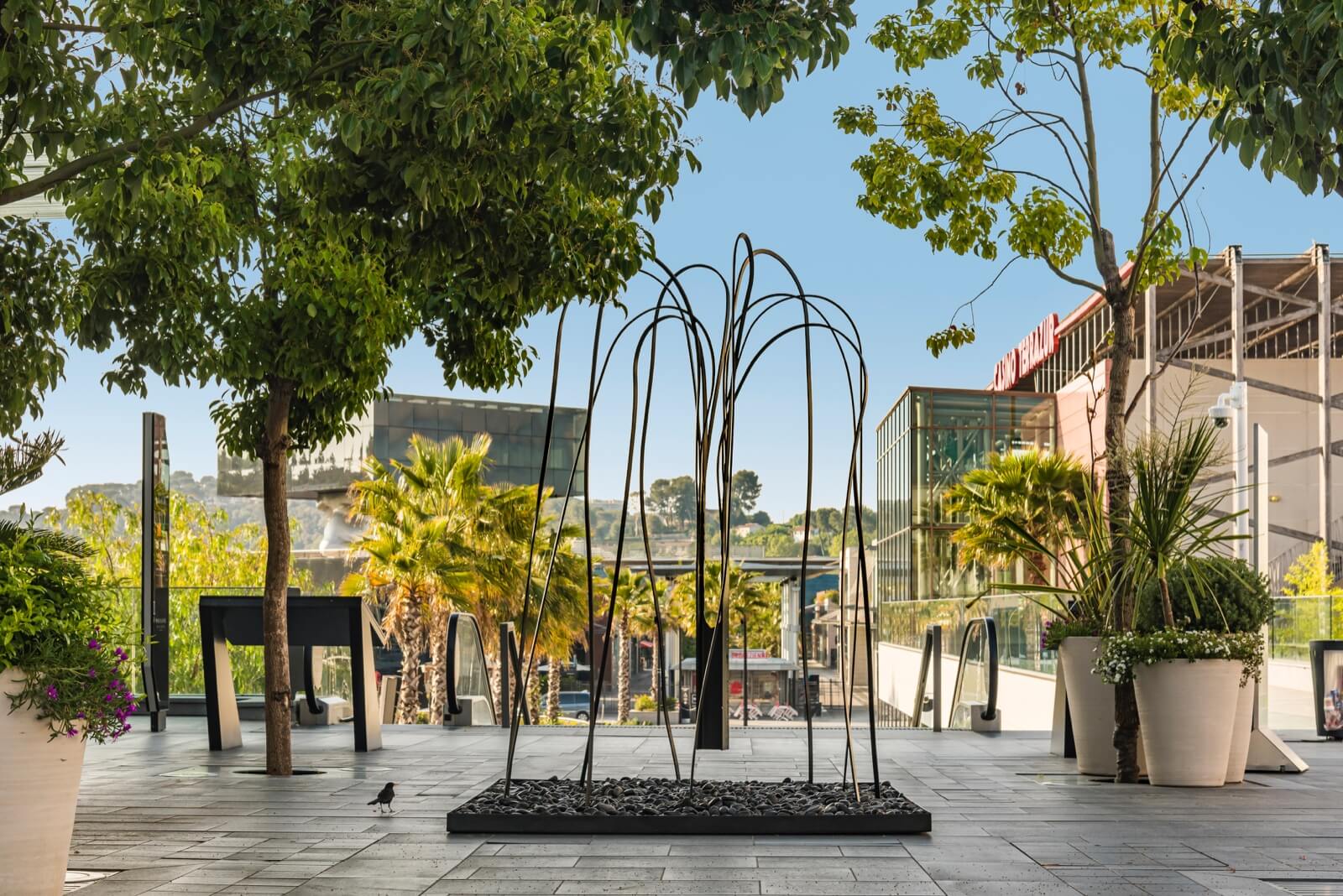
Pablo Reinoso, ‘La Chose’, 2017
COURTESY: Polygone Riviera

Pablo Reinoso, ‘Rolling Sculpture Monaco’, 2018
COURTESY: Polygone Riviera
Besides a twisting steel sculpture for UNSAM (National University of San Martín) in Argentina in 2011, Reinoso’s monumental, outdoor commissions include ‘Nuages Niche Centrale’ (2011-2013), installed next to a quay in Lyon, and ‘Racines de France’ (2016), created for the Élysée Palace during the presidency of François Hollande. The latter features long, curving beams emanating from two black benches placed either side of a garden terrace at the French president’s official residency. “I liked the idea of imagining the French president and his ministers coming outside to talk and sitting down on the work,” he says. “It seemed interesting to create a balance between the two pieces, because a president’s job is about finding a balance when faced with diversity and difficulties.”
After making a new commission for Argentina, which his son helped with, Reinoso is developing a large installation for Johyun Gallery in Busan, a port city in South Korea. Due to be installed in late September, the outdoor piece comprises a sequence of spiralling and longitudinal black beams placed on slabs of stone. It will offer an invitation to sit down outside the gallery, whilst creating a playful promenade leading to the beach. “It’s the first time I’m mixing stone with metal,” Reinoso says. “It has to be strong enough to resist typhoons … the stone can anchor the metal and also heats up less than aluminium.”
As with ‘Supernature’ at Polygone Riviera, Reinoso’s whimsical work combines both ingenuity and surprise.
Pablo Reinsoso – an Argentine-French artist and designer who has been working in Paris since 1978.
Polygone Riviera – A lifestyle shopping centre in an indoor-outdoor setting, blending contemporary art and leisure.





